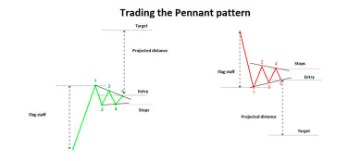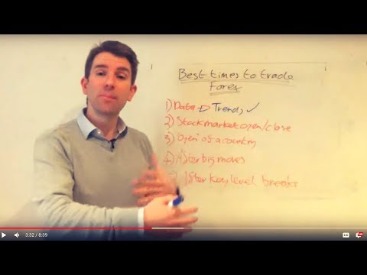The total basis for all properties (other than money) you receive in a partially nontaxable exchange is the total adjusted basis of the properties you give up, with the following adjustments. If, in addition to like-kind property, you give up unlike property, you must recognize gain or loss on the unlike property you give up. The gain or loss is equal to the difference between the fair market value of the unlike property and the adjusted basis of the unlike property. The written exchange agreement must expressly limit your rights to receive, pledge, borrow, or otherwise obtain the benefits of money or unlike property held by the qualified intermediary.
Show these calculations on a separate statement and attach it to your tax return. Enter the additional depreciation after 1969 and before 1976. If straight line depreciation exceeds the actual depreciation for the period after 1975, reduce line 26d by the excess. For section 1255 property disposed of in a sale, exchange, or involuntary conversion, enter the amount realized. For section 1255 property disposed of in any other way, enter the FMV.
Estimated Tax Payments
Nonqualified preferred stock is treated as property other than stock. Generally, it is preferred stock with any of the following features. If you realize a gain on the exchange of an endowment contract or annuity contract for a life insurance contract or an exchange of an annuity contract for an endowment contract, you must recognize the gain. The following kinds of property dispositions are excluded from these rules. A put is an option that entitles the holder to sell property at a specified price at any time before a specified future date. For more information on related persons, see Nondeductible Loss under Sales and Exchanges Between Related Persons in chapter 2.
- 535, Business Expenses, for information on amortizable intangible property and chapter 1 of Pub.
- If your net severance damages are more than the basis of your retained property, you have a gain.
- Like-kind properties are properties of the same nature or character, even if they differ in grade or quality.
This section discusses rules for determining the treatment of gain or loss from various dispositions of property. A commodities derivative dealer is a person who regularly offers to enter into, assume, offset, assign, or terminate positions in commodities derivative financial instruments with customers in the ordinary course of a trade or business. See the Instructions for Schedule D and the Instructions for Form 8949 for details on how to report the sale and exclusion. Report the sale or exchange of DC Zone business property on Form 4797. The liability assumed is not treated as money or other property. The recognized gain is limited to $10,000, the cash received.
Claiming an Ordinary Loss
Assume the same facts as in Example 1, except that you sell the stock for $6,900 instead of $10,500. You cannot deduct the loss not allowed to your brother. Amounts you receive for the release of a restrictive covenant in a deed to land are treated as proceeds from the sale of a capital asset.
Neptune Digital Assets Announces Comprehensive Net Income of … – StreetInsider.com
Neptune Digital Assets Announces Comprehensive Net Income of ….
Posted: Tue, 01 Aug 2023 11:05:49 GMT [source]
Claim the loss on line 7 of your Form 1040 or Form 1040-SR. If your net capital loss is more than this limit, you can carry the loss forward to later years. You may use the Capital Loss Carryover Worksheet found in Publication 550, Investment Income and Expenses or in the Instructions for Schedule D (Form 1040)PDF to figure the amount you can carry forward. If you had a gain on the disposition of oil, gas, or geothermal property placed in service before 1987, treat all or part of the gain as ordinary income.
Loss on sale of fixed asset
The contract you and the condemning authority signed showed only the total purchase price. It did not specify a fixed sum for severance damages. However, at settlement, the condemning authority gave you closing papers showing clearly the part of the purchase price that was for severance damages.
If you transfer a perpetual easement for consideration and do not keep any beneficial interest in the part of the property affected by the easement, the transaction will be treated as a sale of property. The company breaks even on the disposal of a fixed asset if the cash or trade-in allowance received is equal to the book value. It also breaks even of an asset with no remaining book value is discarded and nothing is received in return. The tax rate on most net capital gain is no higher than 15% for most individuals.
Your $4,000 condemnation award is reduced by the $100 balance of the special assessment, leaving a $3,900 net condemnation award. Amounts taken out of the award to pay your debts are considered paid to you. Amounts the government pays directly to the holder of a mortgage or lien against your property are part of your award, even if the debt attaches to the property and is not your personal liability. This publication explains the treatment of a gain or loss from a condemnation or disposition under the threat of condemnation.
2 Disposals by sale
This applies if substantially all of your expected return is attributable to the time value of your net investment (like interest on a loan) and the transaction is any of the following. Farmers who cut timber on their land and sell it as logs, firewood, or pulpwood usually have no cost or other basis for that timber. These sales constitute a very minor part of their farm businesses.
Franklin Street Properties Corp. Announces Second Quarter 2023 … – Business Wire
Franklin Street Properties Corp. Announces Second Quarter 2023 ….
Posted: Tue, 01 Aug 2023 21:10:00 GMT [source]
The amount realized is then treated as being $150,000 ($400,000 − $250,000) and the gain realized is $70,000 ($150,000 amount realized − $80,000 adjusted basis). You must recognize $50,000 of the gain ($150,000 amount realized − $100,000 cost of new home). Your basis in the new home is $80,000 ($100,000 cost − $20,000 gain postponed). You paid $2,000 down and borrowed the remaining $13,000 from the dealer’s credit company. You are not personally liable for the loan (nonrecourse debt), and pledge the new car as security. The credit company repossessed the car because you stopped making loan payments.
Discarding a Fixed Asset (Loss)
The IRS is committed to serving our multilingual customers by offering OPI services. The OPI Service is a federally funded program and is available at Taxpayer Assistance Centers (TACs), other IRS offices, and every VITA/TCE return site. The OPI Service is accessible in more than 350 languages.
No gain or loss is recognized if you make any of the following exchanges, and if the insured or the annuitant is the same under both contracts. The 2-year holding period begins on the date of the last transfer of property that was part of the like-kind exchange. If real estate bookkeeping the holder’s risk of loss on the property is substantially diminished during any period, however, that period is not counted toward the 2-year holding period. The holder’s risk of loss on the property is substantially diminished by any of the following events.
For dispositions of plants reportable on Form 4797, enter the recapture amount taxed as ordinary income on Part III, line 22. The residual method must be used for any transfer of a group of assets that constitutes a trade or business and for which the buyer’s basis is determined only by the amount paid for the assets. Section 743(b) applies if a partnership has an election in effect under section 754 of the Internal Revenue Code. Your interest in a corporation is represented by stock certificates. When you sell these certificates, you usually realize capital gain or loss. For information on the sale of stock, see chapter 4 in Publication 550, Investment Income and ExpensesPDF.
What is the difference between short-term and long-term capital gain tax rates?
If the abandoned property is secured by debt, special rules apply. The tax consequences of abandonment of property that is secured by debt depend on whether you are personally liable for the debt (recourse debt) or you are not personally liable for the debt (nonrecourse debt). For more information, including examples, see chapter 3 of Pub. You must know the basis of your property to determine whether you have a gain or loss from its sale or other disposition. However, if you acquired the property by gift, inheritance, or in some way other than buying it, you must use a basis other than its cost. If you grant an easement on your property (for example, a right-of-way over it) under condemnation or threat of condemnation, you are considered to have made a forced sale, even though you keep the legal title.
See the Instructions for Schedule D (Form 1040) and the Instructions for Form 8949. For a discussion of like-kind property, see Like-Kind Property under Like-Kind Exchanges, later. You ordinarily must report the gain if you receive money or unlike property. You can elect to postpone reporting the gain if you buy property that is similar or related in service or use to the condemned property within the replacement period, discussed later. You can also elect to postpone reporting the gain if you buy a controlling interest (at least 80%) in a corporation owning property that is similar or related in service or use to the condemned property.
You claimed allowable depreciation of $4,600 on the rental half. You spent $200 in legal expenses to obtain the condemnation award. However, depending on the type of property you receive, you may not have to report a gain on an involuntary conversion. Generally, you do not report the gain if you receive property that is similar or related in service or use to the converted property. Your basis for the new property is the same as your basis for the converted property. This means that the gain is deferred until a taxable sale or exchange occurs.











